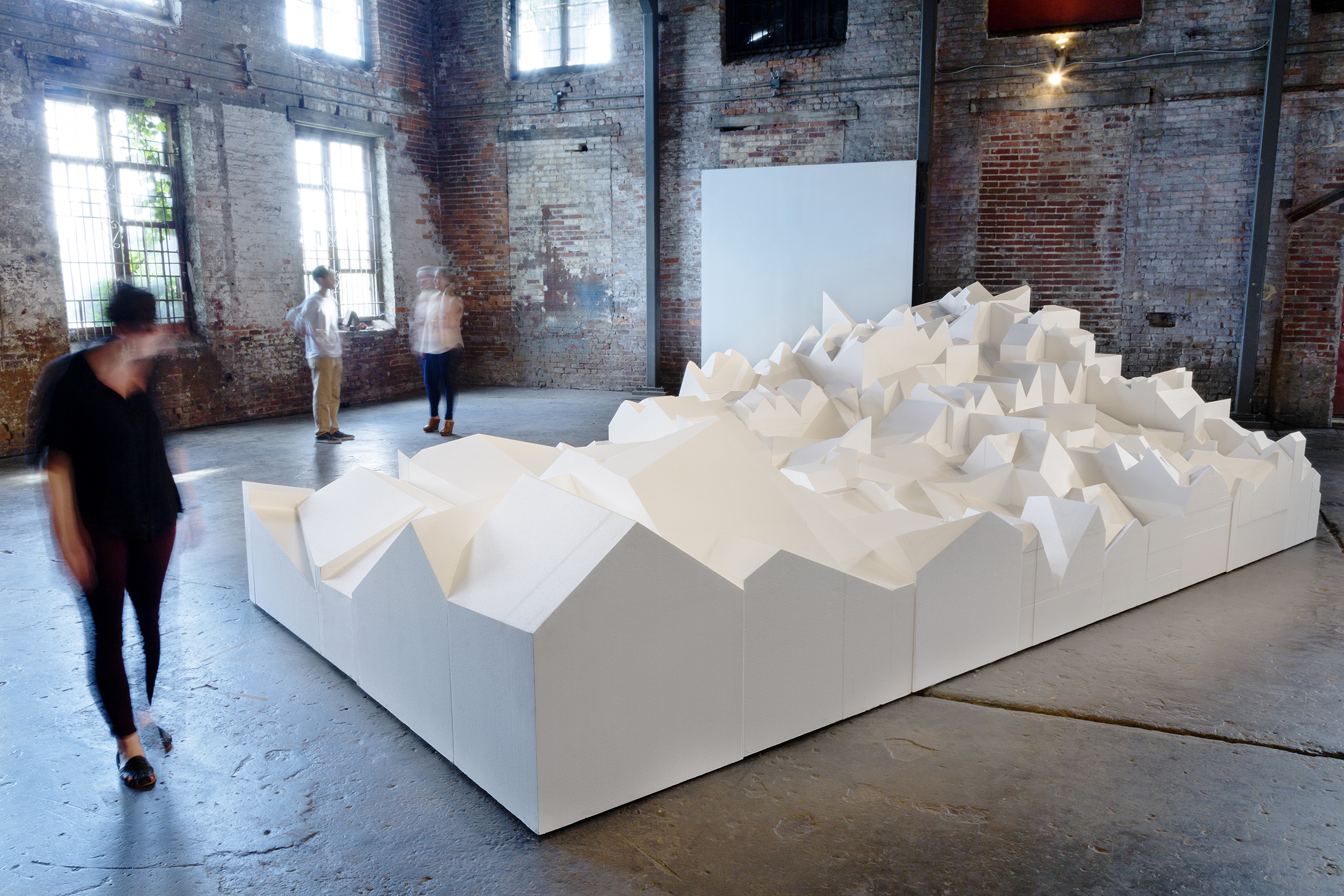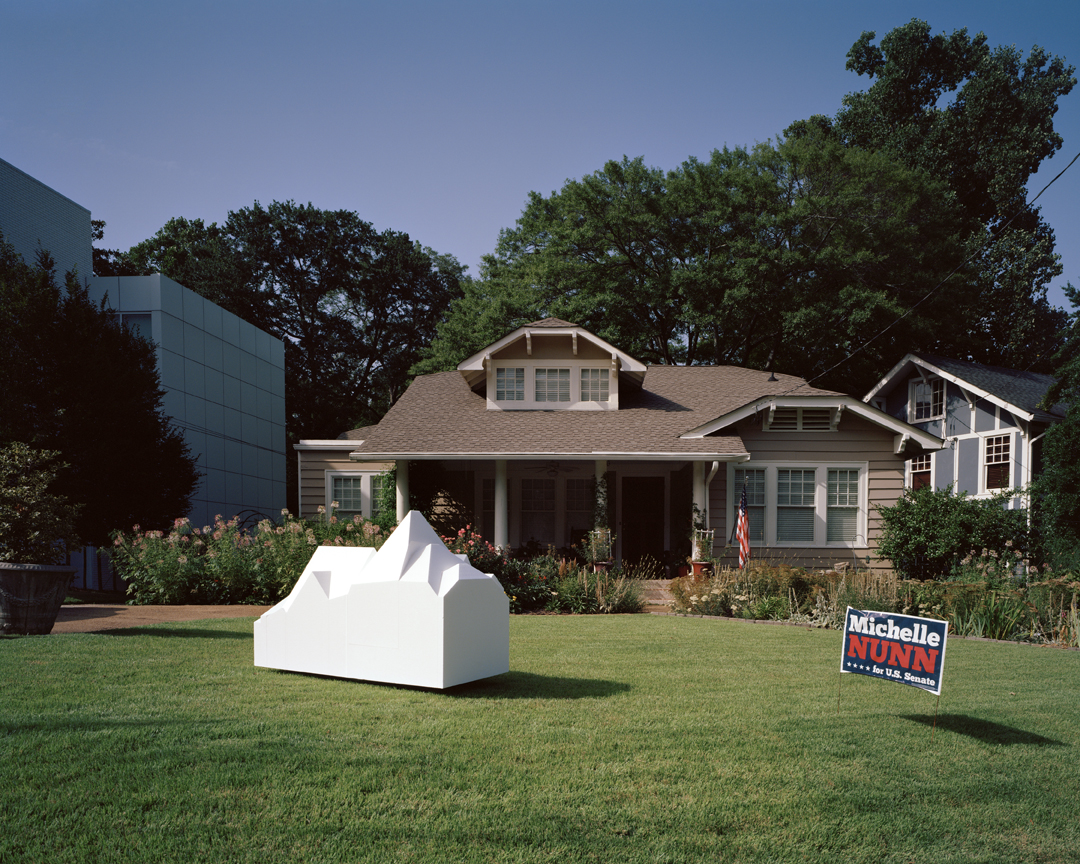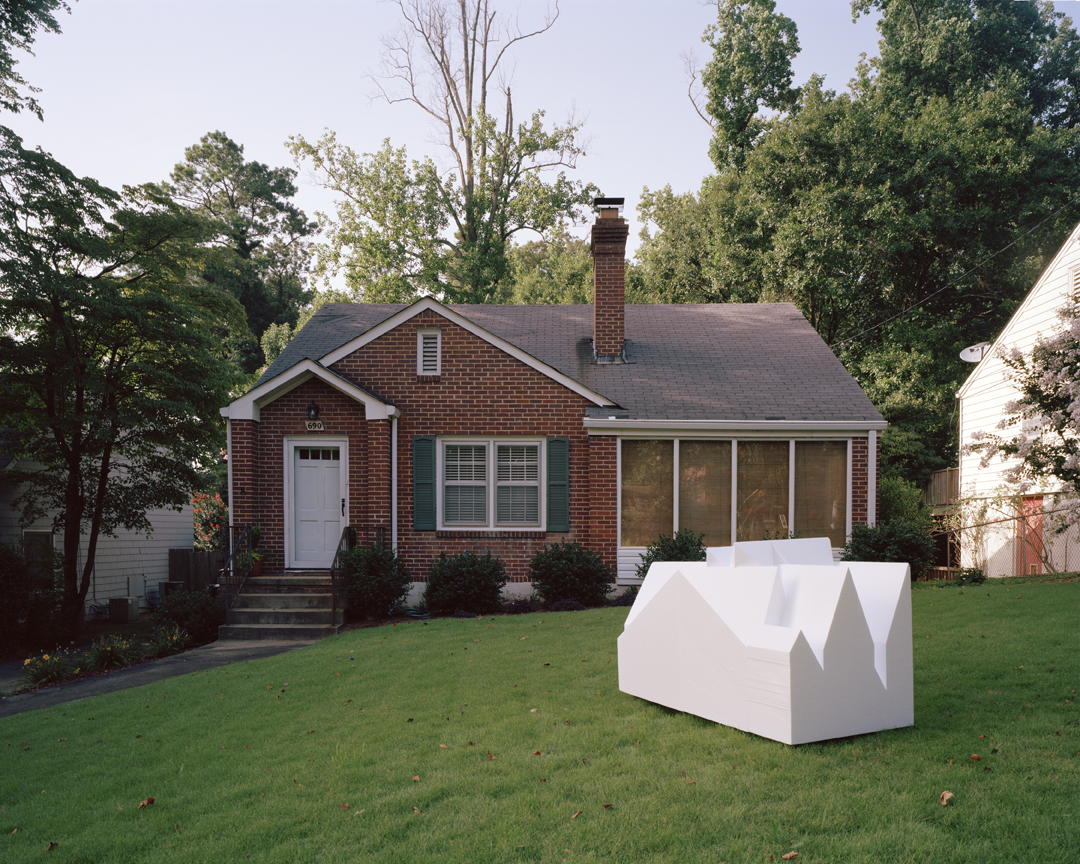DOMESTIC HATS
Domestic Hats explores ordinary roof typologies and reconsiders the role of the massing model in architectural representation.
A quick drive around a few neighborhoods demonstrate stylistic differences in the domestic architecture of Atlanta. Arguably the single most common element of these houses is the roof. Whether located in English Avenue, Old Fourth Ward, or Ansley Park, shared rooflines crisscross neighborhood boundaries. Ordinary and simplistic, yet highly repetitive, gable and hip roofs dominate the scene while butterfly and mansard roofs represent a rarer species. Dormers, A-frame, and shed roofs are combined to make a complex system of functional rooftops with countless variations. These copy-paste forms not only populate the housing stock, but represent house figures and house shapes widely accepted by the public.
Massing models are usually small in size and the result of a quick, iterative design process by the architect. They represent the schema, the diagram, or a proto-architecture. Lacking detail and often made out of a singular material, massing models distinguish differences in a volumetric study—“slightly thinner”, “no, a little longer”, or better yet, “let’s make it fatter.” Domestic Hats delights in these tendencies to engage multiples, but rejects the constraint of smallness. For these purposes, the massing models are scaled up to an awkward size, they are not easily transportable, and they don’t quite fit in the frame of our foam wire cutter. The massing models to be included in the installation are not large enough to be considered a pavilion, nor do they sit comfortably on a client’s conference room table. Intentionally inflated, these massing models merely represent themselves. No longer a representational stand-in for something else, they reveal new hats for consideration in domestic architecture.
A quick drive around a few neighborhoods demonstrate stylistic differences in the domestic architecture of Atlanta. Arguably the single most common element of these houses is the roof. Whether located in English Avenue, Old Fourth Ward, or Ansley Park, shared rooflines crisscross neighborhood boundaries. Ordinary and simplistic, yet highly repetitive, gable and hip roofs dominate the scene while butterfly and mansard roofs represent a rarer species. Dormers, A-frame, and shed roofs are combined to make a complex system of functional rooftops with countless variations. These copy-paste forms not only populate the housing stock, but represent house figures and house shapes widely accepted by the public.
Massing models are usually small in size and the result of a quick, iterative design process by the architect. They represent the schema, the diagram, or a proto-architecture. Lacking detail and often made out of a singular material, massing models distinguish differences in a volumetric study—“slightly thinner”, “no, a little longer”, or better yet, “let’s make it fatter.” Domestic Hats delights in these tendencies to engage multiples, but rejects the constraint of smallness. For these purposes, the massing models are scaled up to an awkward size, they are not easily transportable, and they don’t quite fit in the frame of our foam wire cutter. The massing models to be included in the installation are not large enough to be considered a pavilion, nor do they sit comfortably on a client’s conference room table. Intentionally inflated, these massing models merely represent themselves. No longer a representational stand-in for something else, they reveal new hats for consideration in domestic architecture.
Location:
Atlanta, GA
Date: 2014
Type: Research/
Exhibitions: Domestic Hats (The Goat Farm Arts Center) 2014; The Last Four Years (RISD Architecture Gallery) 2018; Inscriptions (Harvard GSD) 2018
CREDITS
Design Team: Jennifer Bonner, Ainsley McMaster, and Son Vu
Fabrication Team: Ishrat Lopa, Jessica Greenstein
Funding: GA Tech and Goat Farm Arts Center Arts Investment Package
Photography: Caitlin Peterson; Patrick Heagney
Date: 2014
Type: Research/
Exhibitions: Domestic Hats (The Goat Farm Arts Center) 2014; The Last Four Years (RISD Architecture Gallery) 2018; Inscriptions (Harvard GSD) 2018
CREDITS
Design Team: Jennifer Bonner, Ainsley McMaster, and Son Vu
Fabrication Team: Ishrat Lopa, Jessica Greenstein
Funding: GA Tech and Goat Farm Arts Center Arts Investment Package
Photography: Caitlin Peterson; Patrick Heagney





